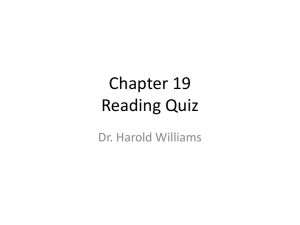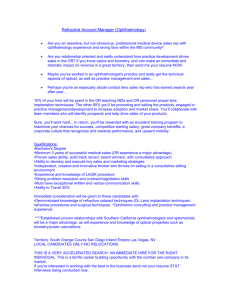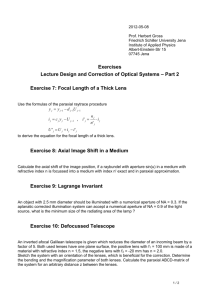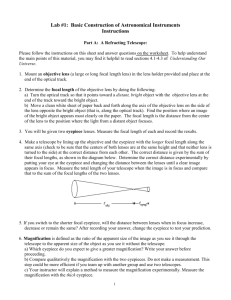Biological instrumentation
advertisement
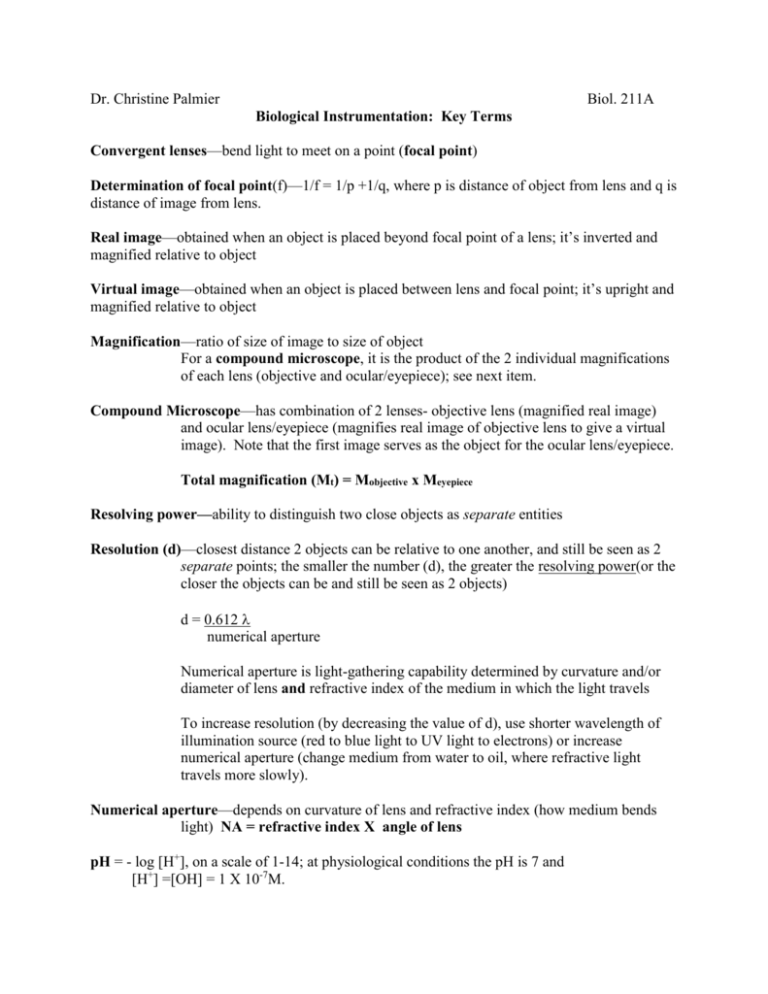
Dr. Christine Palmier Biol. 211A Biological Instrumentation: Key Terms Convergent lenses—bend light to meet on a point (focal point) Determination of focal point(f)—1/f = 1/p +1/q, where p is distance of object from lens and q is distance of image from lens. Real image—obtained when an object is placed beyond focal point of a lens; it’s inverted and magnified relative to object Virtual image—obtained when an object is placed between lens and focal point; it’s upright and magnified relative to object Magnification—ratio of size of image to size of object For a compound microscope, it is the product of the 2 individual magnifications of each lens (objective and ocular/eyepiece); see next item. Compound Microscope—has combination of 2 lenses- objective lens (magnified real image) and ocular lens/eyepiece (magnifies real image of objective lens to give a virtual image). Note that the first image serves as the object for the ocular lens/eyepiece. Total magnification (Mt) = Mobjective x Meyepiece Resolving power—ability to distinguish two close objects as separate entities Resolution (d)—closest distance 2 objects can be relative to one another, and still be seen as 2 separate points; the smaller the number (d), the greater the resolving power(or the closer the objects can be and still be seen as 2 objects) d = 0.612 numerical aperture Numerical aperture is light-gathering capability determined by curvature and/or diameter of lens and refractive index of the medium in which the light travels To increase resolution (by decreasing the value of d), use shorter wavelength of illumination source (red to blue light to UV light to electrons) or increase numerical aperture (change medium from water to oil, where refractive light travels more slowly). Numerical aperture—depends on curvature of lens and refractive index (how medium bends light) NA = refractive index X angle of lens pH = - log [H+], on a scale of 1-14; at physiological conditions the pH is 7 and [H+] =[OH] = 1 X 10-7M.



